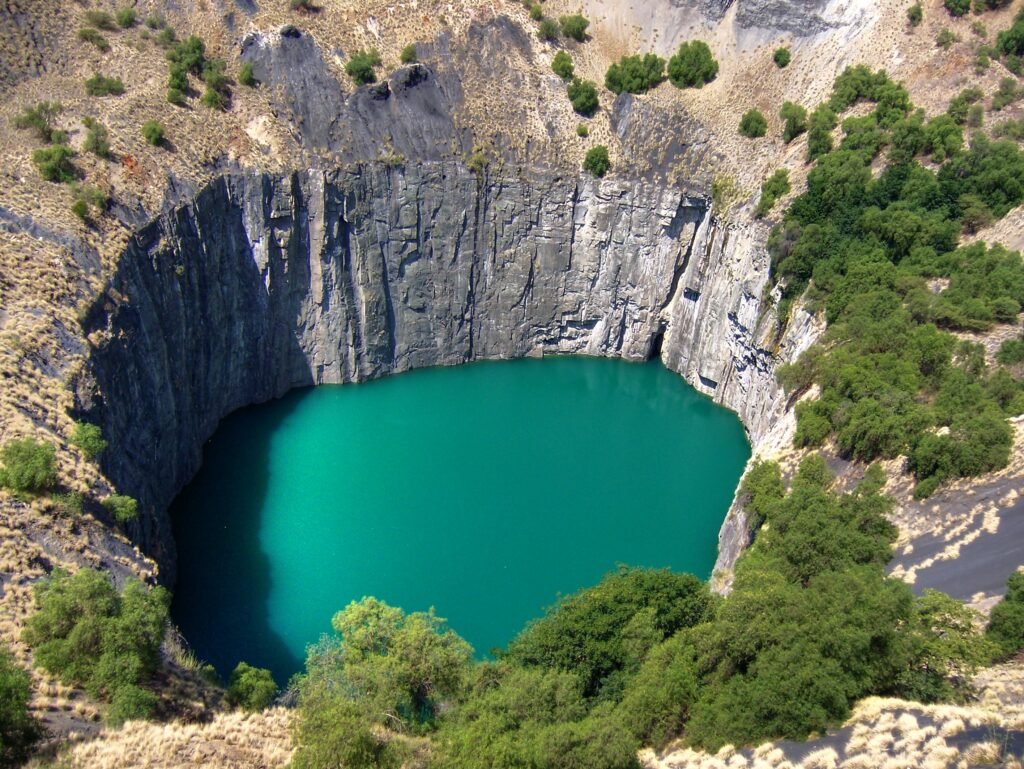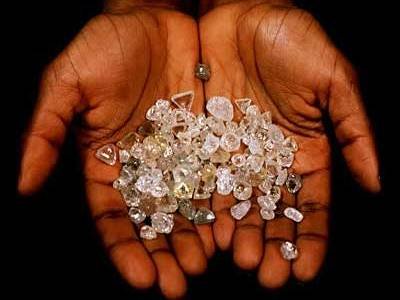Diamond Mining in African History
Diamond Mining in African History: A Legacy of Wealth, Conflict, and Transformation
Diamond mining has played a pivotal role in shaping Africa’s history, economy, and socio-political landscape. For centuries, the continent’s rich diamond deposits have fueled global demand for these precious gemstones, while also leaving a complex legacy of wealth creation, exploitation, and conflict. From the discovery of diamonds in South Africa in the 19th century to the modern-day efforts toward ethical mining, the story of diamond mining in Africa is one of both triumph and tragedy. In this blog post, we will explore the historical significance of diamond mining in Africa, its impact on societies, and its evolution over time.

The Discovery of Diamonds in South Africa
The discovery of diamonds near Kimberley in 1867 marked a turning point in African history. Known as the “Big Hole,” the Kimberley mine became one of the largest hand-dug excavations in the world. This discovery attracted prospectors from around the globe and led to the establishment of De Beers, the company that would dominate the global diamond trade for over a century.

The Rise of Industrial Mining
Colonial Exploitation
During the colonial era, European powers exploited Africa’s diamond resources, often using forced labor and oppressive practices to extract wealth. Countries like Namibia, Angola, and Sierra Leone became key players in the diamond trade, but the benefits rarely reached local communities. Instead, profits were funneled to colonial governments and foreign corporations.
Technological Advancements
By the early 20th century, diamond mining transitioned from manual labor to industrial-scale operations. Advanced machinery and techniques increased efficiency but also displaced traditional artisanal miners. South Africa remained the epicenter of diamond production, with mines like Cullinan and Jagersfontein producing some of the world’s most famous diamonds.
The Dark Legacy of “Blood Diamonds”
The late 20th century saw the rise of “blood diamonds” or “conflict diamonds”—gemstones mined in war zones and sold to finance armed conflict against governments. Countries like Sierra Leone, Liberia, Angola, and the Democratic Republic of Congo (DRC) were deeply affected by this phenomenon. Rebel groups used diamond revenues to fund violence, leading to widespread human rights abuses and instability.

Efforts Toward Ethical Mining
The Kimberley Process
In response to the issue of conflict diamonds, the international community established the Kimberley Process Certification Scheme in 2003. This initiative aimed to prevent the trade of blood diamonds by certifying that diamonds were sourced from conflict-free areas. While the Kimberley Process has reduced the flow of conflict diamonds, critics argue that it does not address broader issues like labor exploitation and environmental damage.
Corporate Responsibility
Major diamond companies, including De Beers and Petra Diamonds, have made efforts to improve transparency and sustainability in their operations. Initiatives such as supporting local communities, reducing environmental impact, and promoting fair labor practices are becoming more common.
Economic and Social Impact
Wealth Creation and Inequality
While diamond mining has generated significant wealth for African nations, the benefits have often been unevenly distributed. In many cases, foreign companies and elites have reaped the rewards, leaving local communities impoverished and marginalized.
Community Development
Some mining companies have invested in infrastructure, education, and healthcare in diamond-producing regions. For example, Botswana has used diamond revenues to transform itself into one of Africa’s most prosperous nations, with improvements in living standards and governance.
Famous African Diamonds
1. The Cullinan Diamond
Discovered in South Africa in 1905, the Cullinan Diamond is the largest gem-quality diamond ever found. It was cut into several stones, including the Great Star of Africa, which is part of the British Crown Jewels.
2. The Lesotho Promise
Found in Lesotho in 2006, the Lesotho Promise is one of the largest diamonds ever discovered in Africa. Its sale brought significant revenue to the small mountain kingdom.
3. The Pink Star Diamond
Mined in Botswana, the Pink Star Diamond is one of the rarest and most valuable diamonds in the world, fetching record-breaking prices at auction.
Frequently Asked Questions (FAQs)
Q1: Which African country produces the most diamonds?
A1: Botswana is currently the largest diamond producer in Africa, followed by South Africa, Angola, and the DRC.
Q2: What are blood diamonds?
A2: Blood diamonds, or conflict diamonds, are gemstones mined in war zones and sold to finance armed conflict against governments. They have been linked to human rights abuses and regional instability.
Q3: How has diamond mining impacted African economies?
A3: Diamond mining has contributed to economic growth and infrastructure development in some countries, but it has also exacerbated inequality and funded conflicts in others.

